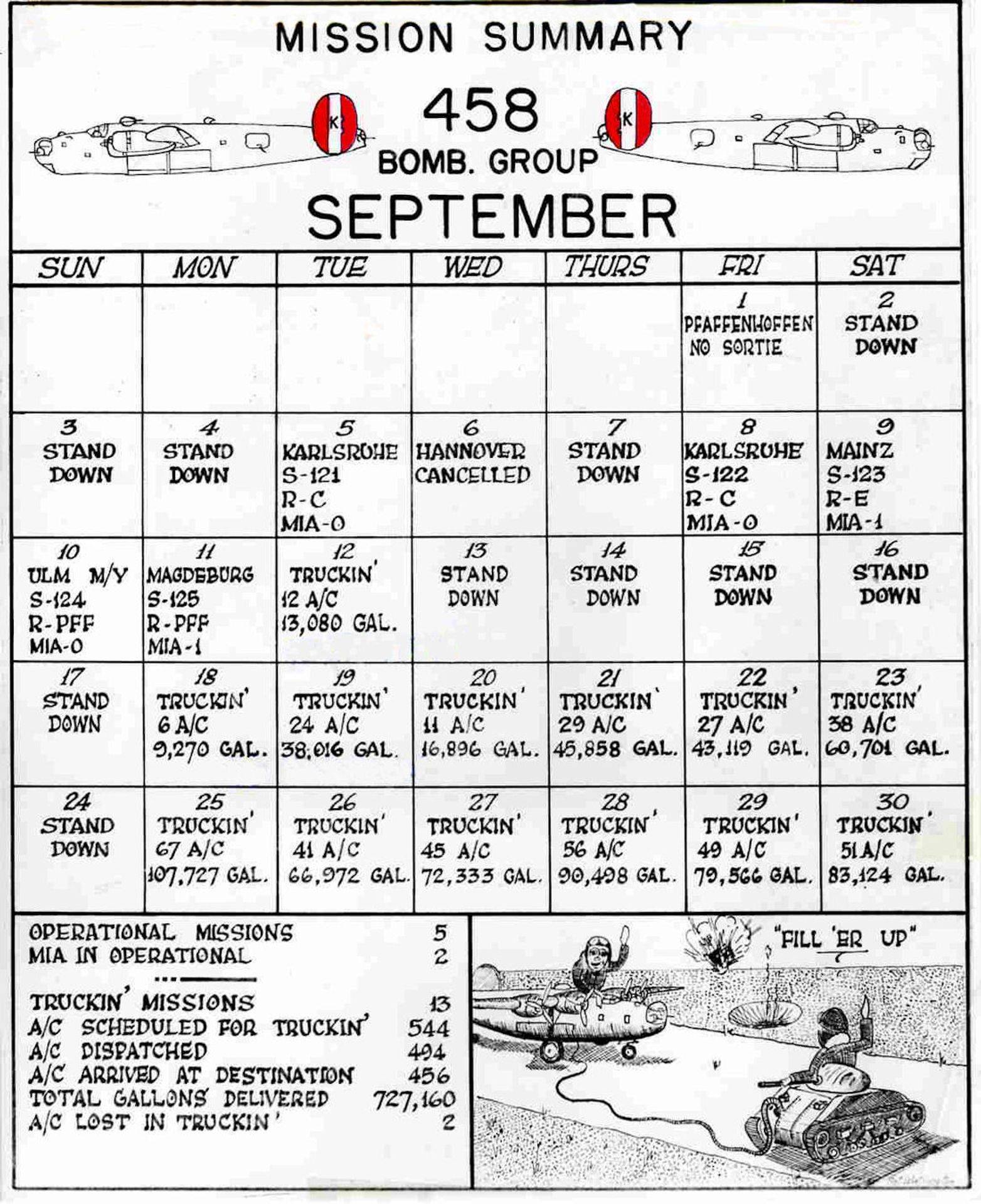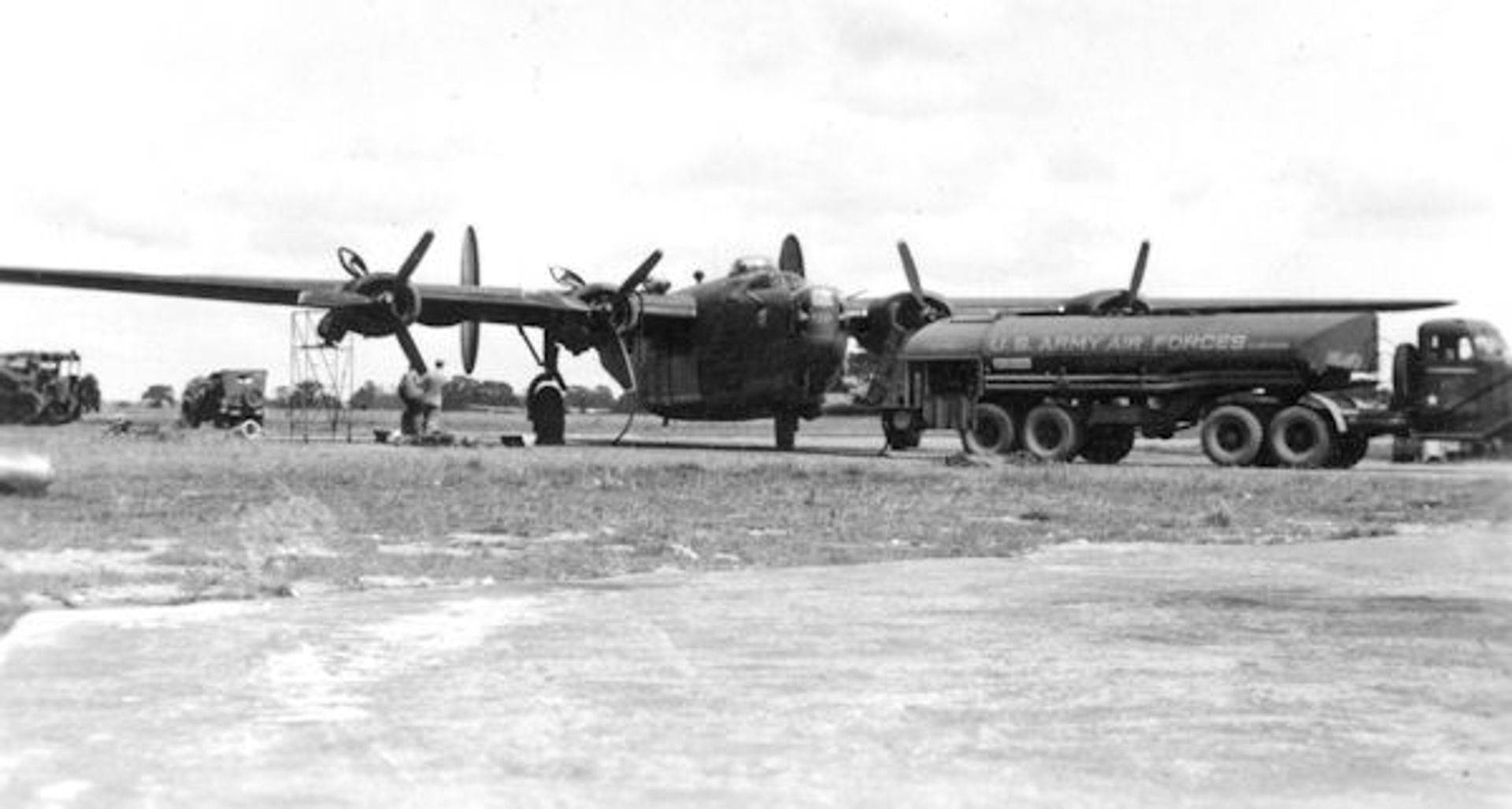458th Bombardment Group (H)
Mission Narrative
September 1944
458TH BOMBARDMENT GROUP (H)
HISTORY
SUMMARY OF OPERATIONS
The major factor of the Group’s activity for the month of September was the ferrying of gasoline to three airfields in France. This was in close cooperation with the ground forces who, in their big push through were in urgent need of the valuable fuel. However, during the early part of the month before becoming unoperational [sic] we managed to garner credit for five sorties. We will spend more time on “Truckin” missions after we record the operational sorties.
1 September we were alerted and given as a target an ammo dump near the town of PFAFFENHOFFEN north of STRAUSBURG. This was scheduled to be an important ground support and had been requested by SHAEF. Thirty-four A/C were dispatched, but the mission was abandoned due to poor weather after the formation had reached a point west of PARIS and northeast of CHARTRES, FRANCE. Although the formation was over the Continent we were not allowed a sortie credit for our efforts. [Not mentioned in these records is the crash of the lead PFF ship with Capt LELAND GRIFFITH]
It was not until 5 September that we were airborne again. On that date we dispatched 22 A/C under the leadership of Lt Col O’NEILL and Capt GORRELL, to attack the M/Y at KARLSRUHE, GERMANY. Twenty of our A/C were over the target dropping 180×500 GP’s with good results. Sortie 121 chalked up.
Poor weather kept us grounded until the 8th when once again we paid a visit to the M/Y at KARLSRUHE. On this attack we put twenty-two A/C over the target under the leadership of Capt BOOTH, dropping 57×1000 GP’s on the target with the following results: bombs of First Squadron landed on MPI and to the south. Bombs of Second Squadron landed on MPI and to north. We don’t think it will be necessary to pay another visit to KARLSRUHE. Sortie 122 was chalked up on the black side of the ledger.
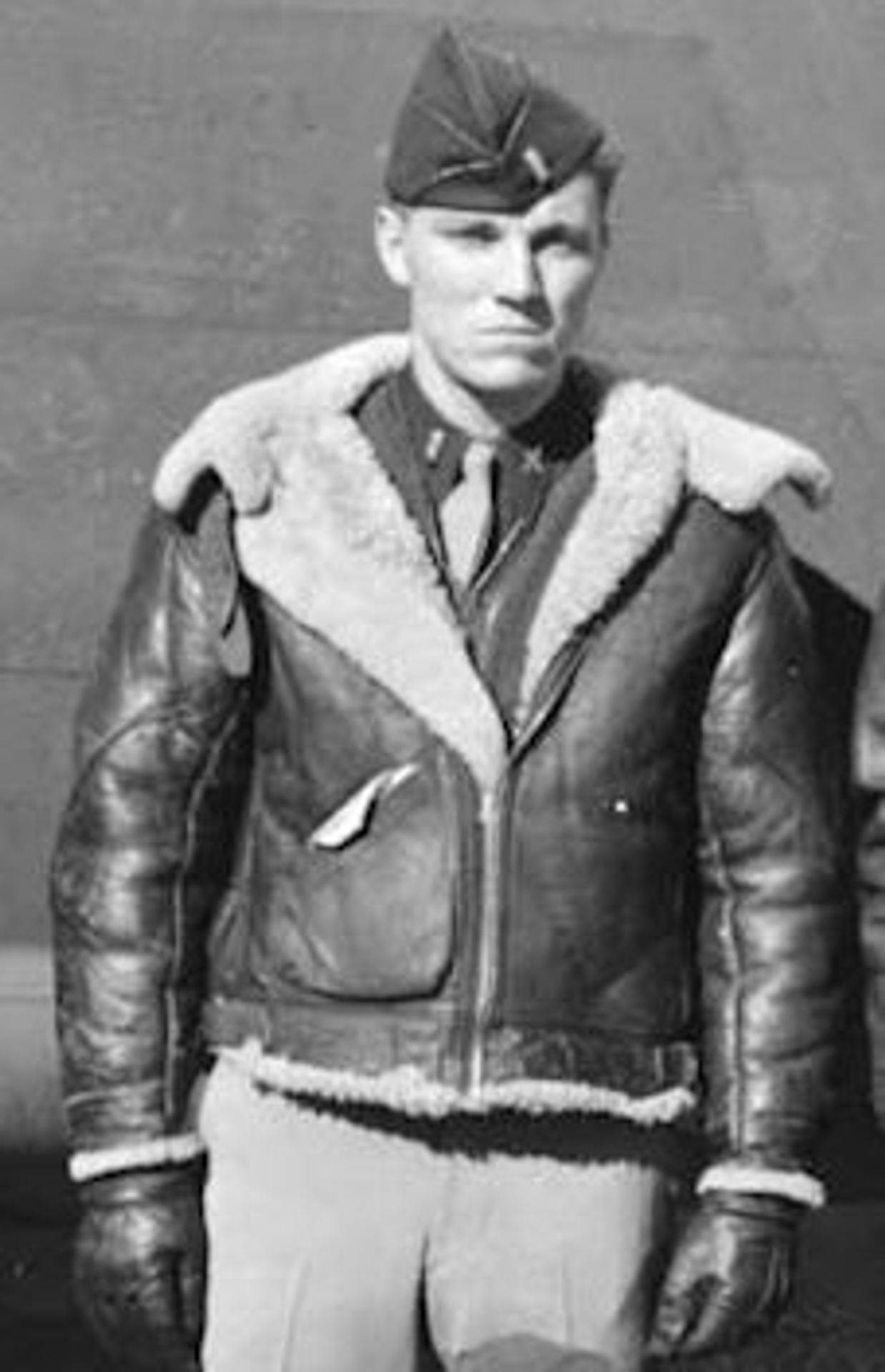
Keeping in step with the VIII AF plan of disrupting the Kraut’s supply and communication lines, we were once again dispatched to hit another M/Y on the 9th, namely MAINZ M/Y. Nineteen of our A/C were over the target led by Major HENSON and Capt CLAGGETT [left], dropping 320×250 GP’s with the aid of PFF equipment with unobserved results. Our A/C 342-S [Lt Paul W. Stoneburner] was seen going down very fast with #4 engine smoking north of TRIER, GERMANY. (See MIA section for names, etc)
[Also lost to an accident on this date was the crew of Lt William R. Frederick]
Again on the 10th another blow at Schickelgruber’s transportation lines, this time the ULM M/Y. The way we had been hitting these M/Y would seem to indicate that after this fracas is over that the Hun will [be] forced to use bicycles or shoe leather and here’s to hoping it will be Ersatz goods at that. To go on with the serious side of the day, we placed 19 A/C over the target under the leadership of Capt SPEER and dropped 90×500 GP’s and 100×500 M17 incendiaries with the aid of PFF equipment with unobserved results.
Rumors began spreading that we were to become unoperational [sic] but before this event we completed another Sortie, namely 125 by attacking a SYNTHETIC OIL PLANT at MAGDEBURG, GERMANY. We placed 25 A/C over the target under the leadership of Major HENSON, Capt’s CLAGGETT and WRIGHT. Our bomb load dropped was 1190×100 GP’s, and bombing was accomplished by the aid of PFF equipment with unobserved results. Our A/C 314, 752nd Sq. [Lt Thomas G. Horgan] was apparently hit by flak over KOBLENZ. #1 engine was feathered and A/C dropped out of formation and down to 10,000. Seven ‘chutes reported, one of which may not have opened. A/C continued flying below formation for 10-20 minutes under control and in no apparent trouble when last seen. (See MIA section for names, etc)
And thus ended our combat status for the month of September. From the 12th until the end of the month we were to fulfill a mission so vital to the success of the ground forces, namely: the ferrying of 80 octane gas to three A/F’s in France. The importance, the additional work involved, the danger of the assignment cannot be over emphasized.
In addition to dispatching our own A/C we had to take care of A/C from the 389th Group. Our personnel flew these A/C and our ground echelon were responsible for the maintenance of these additional A/C.
We will try to give a picture of “Truckin” operations as best we can. In the beginning all A/C used in “Truckin” were equipped with 4 bomb bay platforms, and each A/C loaded with 218 five gallon cans. Each A/C commander was responsible for loading and lashing of gas loads in his A/C. It was figured to a fine point, that loading and unloading would take approximately four hours. On the 18 September, the bomb bay platforms were discarded in place of bomb bay and fighter [drop] tanks.
Each A/C, when two bomb bay tanks were available, were loaded as follows:
| Tank Location - Two bomb bay tanks available | Capacity |
|---|---|
| Wing Tip Tanks | 450 Gals. |
| Left Front Bomb Bay | 390 Gals. |
| Right Front Bomb Bay | 390 Gals. |
| 4x108 Gals in tanks in rear bomb bay | 432 Gals. |
| 1662 Gals. |
When only one bomb bay tank was available:
| Tank Location - One bomb bay tank available | Capacity |
|---|---|
| Wing Tip | 450 Gals. |
| Left Front Bomb Bay | 390 Gals. |
| 4x108 in Rear Bomb Bay | 432 Gals. |
| Front Right Bomb Bay | 108 Gals. |
| 2x165 Gal in tanks in waist | 330 Gals. |
| 1710 Gals. |
All day long British tank trucks were pulling into the station, unloading and returning to their terminal for reloading. It was an endless stream of black gold and great credit must be given [to] the engineering sections for their part they played in this important task.
On 11 September Col Isbell and Lt. Col Packer inspected Clastres A/F, St. Dizier and Florennes A/F. The irony of this whole project was that the group had bombed and done a remarkable job on these A/F’s when in German hands. This naturally resulted in bomb craters on dispersal areas, plus fox holes and other objects too numerous to mention that made the pilots be on their toes every time they landed or took off.
Part of our personnel were ferried over to take charge of operations, maintenance crews and cooks and other sundry personnel. A courier A/C was dispatched from this drome each day in order to transport personnel and reports and act as liaison between this drome and Lille A/F. Living conditions were not in the style of AAF 123, the personnel from the highest to the lowest living in these tents, eating out of mess kits, but being rewarded for these inconveniences by a visit to the town of Lille and their subsequent experiences. We seemed to be the only “Yank” personnel there as the A/F was in the hands of the British “Tommies” and from all reports of the men lucky enough to have been over there, the “Yanks” were well received by the grateful French. Many were the tall stories told, bottles of Champaign drunk, gifts and souvenirs picked up, and oh those French girls, whew!!!!
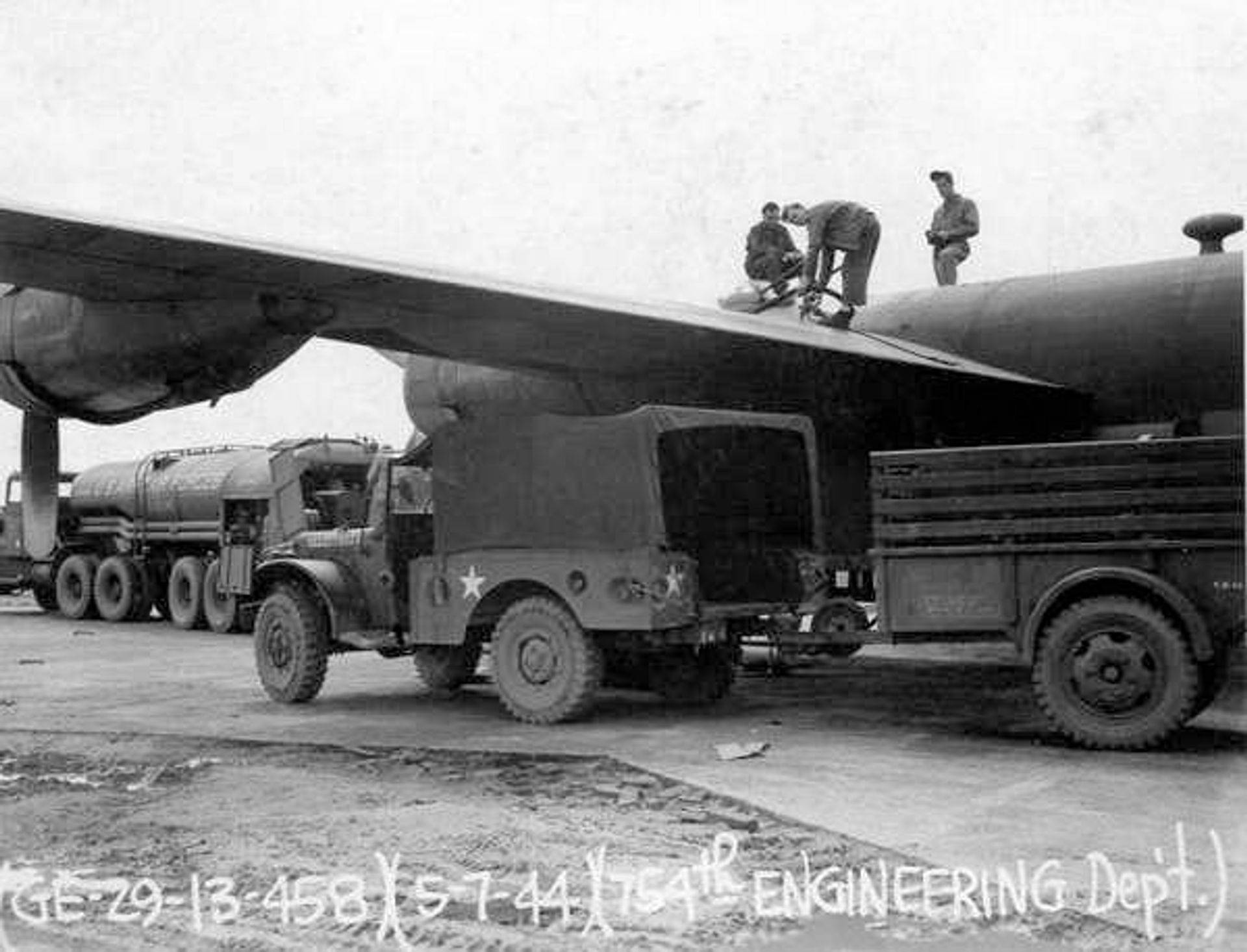
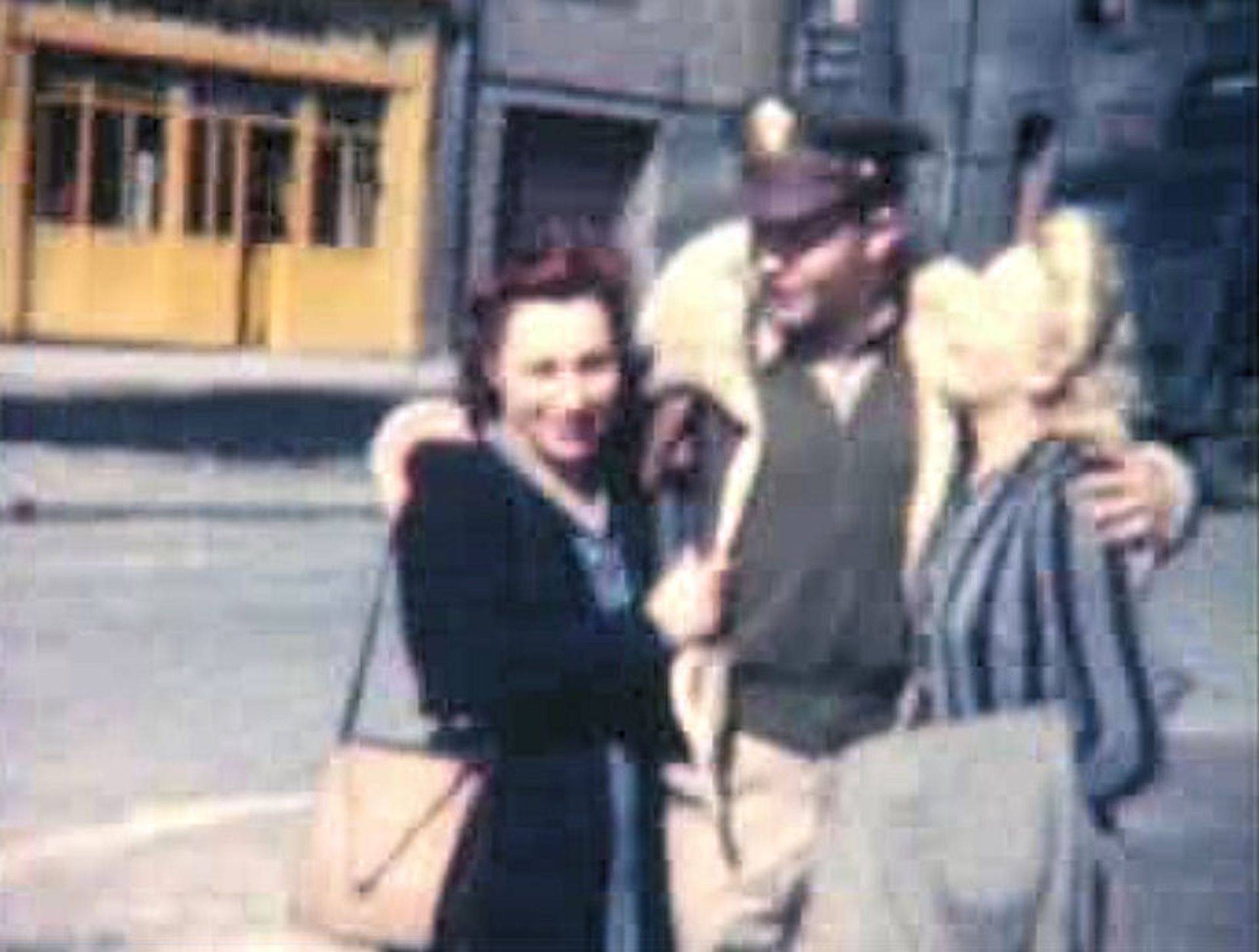
Well, to get on with the serious side of “Truckin”. The normal crew on each A/C consisted of the pilot, co-pilot, pilotage navigator, engineer and radio operator. [many crews carried at least one gunner as well]. All members carried their bedding, rations and a canteen of water, plus the old faithful .45 caliber, just in case. The take-off weight of each A/C was 63,000 and the landing weight, 60,060.
In thirteen missions we dispatched 494 A/C, and 456 arrived at the terminals transporting 727,160 gallons of gasoline. Seven missions were to Clastres A/F, eight to Lille and one to St. Dizier. On some days, A/C would be dispatched to one A/F whilst another section [would fly] to one of the other terminals.
Out of 494 A/C dispatched we lost 6, one A/C [Lt Herbert H. Humke] crashed on take-off and killing all personnel on board (see KIA section for names), one A/C [Lt George J. Koehn] took off from St. Dizier and has never been heard of (see MIA Section), whilst 4 A/C (without loss of personnel) were damaged and placed in the category of salvage, when they ran into bomb craters on the French terminals. We are attaching a complete report on all “Truckin” operations, which will give a clear and concise story of the efforts of the group in this important task. The group can well be proud of their part played in the support of the ground personnel.
| Summary | |
|---|---|
| Operational Missions | 5 |
| MIA in Operational | 2 |
| Truckin' Missions | 13 |
| A/C Scheduled for Truckin' | 544 |
| A/c Dispatched | 494 |
| A/C Arriving at Destination | 456 |
| Total Gals. Gasoline Delivered | 727,160 |
| A/C Lost in Truckin' | 2 |
| (One crashed on T/O, one took-off from St. Dizier A/F and has never been heard from) |

